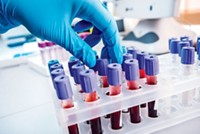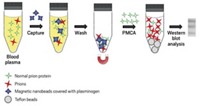Advertisement
Grab your lab coat. Let's get started
Welcome!
Welcome!
Create an account below to get 6 C&EN articles per month, receive newsletters and more - all free.
It seems this is your first time logging in online. Please enter the following information to continue.
As an ACS member you automatically get access to this site. All we need is few more details to create your reading experience.
Not you? Sign in with a different account.
Not you? Sign in with a different account.
ERROR 1
ERROR 1
ERROR 2
ERROR 2
ERROR 2
ERROR 2
ERROR 2
Password and Confirm password must match.
If you have an ACS member number, please enter it here so we can link this account to your membership. (optional)
ERROR 2
ACS values your privacy. By submitting your information, you are gaining access to C&EN and subscribing to our weekly newsletter. We use the information you provide to make your reading experience better, and we will never sell your data to third party members.
Analytical Chemistry
Study tests plasma biomarkers for Alzheimer’s
Ratios of peptides in blood predict amyloid levels in brain with 90% accuracy
by Celia Henry Arnaud
February 1, 2018
| A version of this story appeared in
Volume 96, Issue 6
Protein clumps, called amyloids, accumulate in the brains of people with Alzheimer’s disease. The current methods for detecting amyloids—positron emission tomography (PET) imaging of the brain and measurement of the clumping protein amyloid-β in cerebrospinal fluid—are expensive and invasive. Researchers want more easily accessible biomarkers that can provide the same information, but they’ve had no luck so far.
An international team led by Katsuhiko Yanagisawa of the Japanese National Center for Geriatrics & Gerontology now reports a promising set of amyloid biomarkers from blood plasma (Nature 2018, DOI: 10.1038/nature25456).
The researchers pull target peptides out of plasma using immunoprecipitation and then analyze them by mass spectrometry. Rather than use individual peptides as biomarkers, the researchers use ratios of peptides. They measure levels of three peptides derived from the amyloid precursor protein—one that is involved in amyloid formation and two that are not—and calculate the ratios.
The research team analyzed plasma samples from two independent data sets that contained samples from people who were cognitively normal, people who had mild cognitive impairment, and people who had Alzheimer’s-related dementia. The biomarker ratios were approximately 90% accurate in predicting brain amyloid-β levels measured by PET imaging.
Christian Humpel, an Alzheimer’s researcher at the Medical University of Innsbruck, calls the work an “interesting scientific finding,” but he questions whether it will make a good routine method. The method is more complex than the immunoassays typically used in clinical analyses. Furthermore, he says, it remains to be seen if the results can be reproduced in other labs.





Join the conversation
Contact the reporter
Submit a Letter to the Editor for publication
Engage with us on Twitter